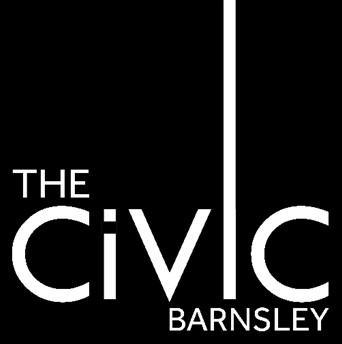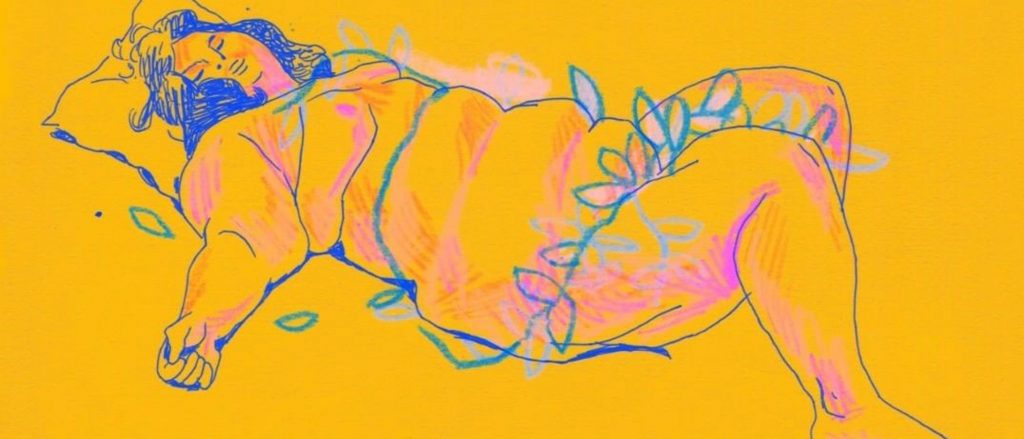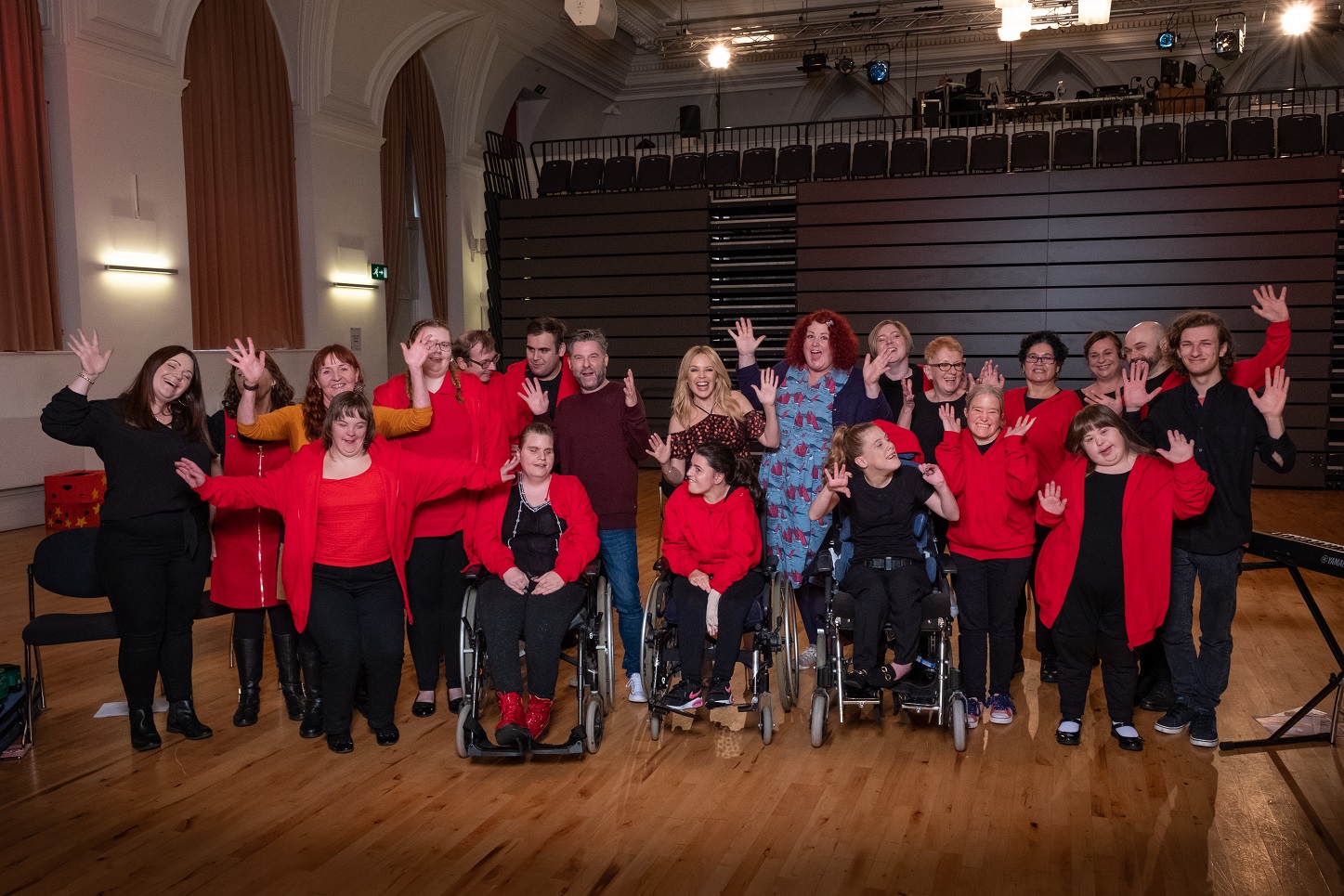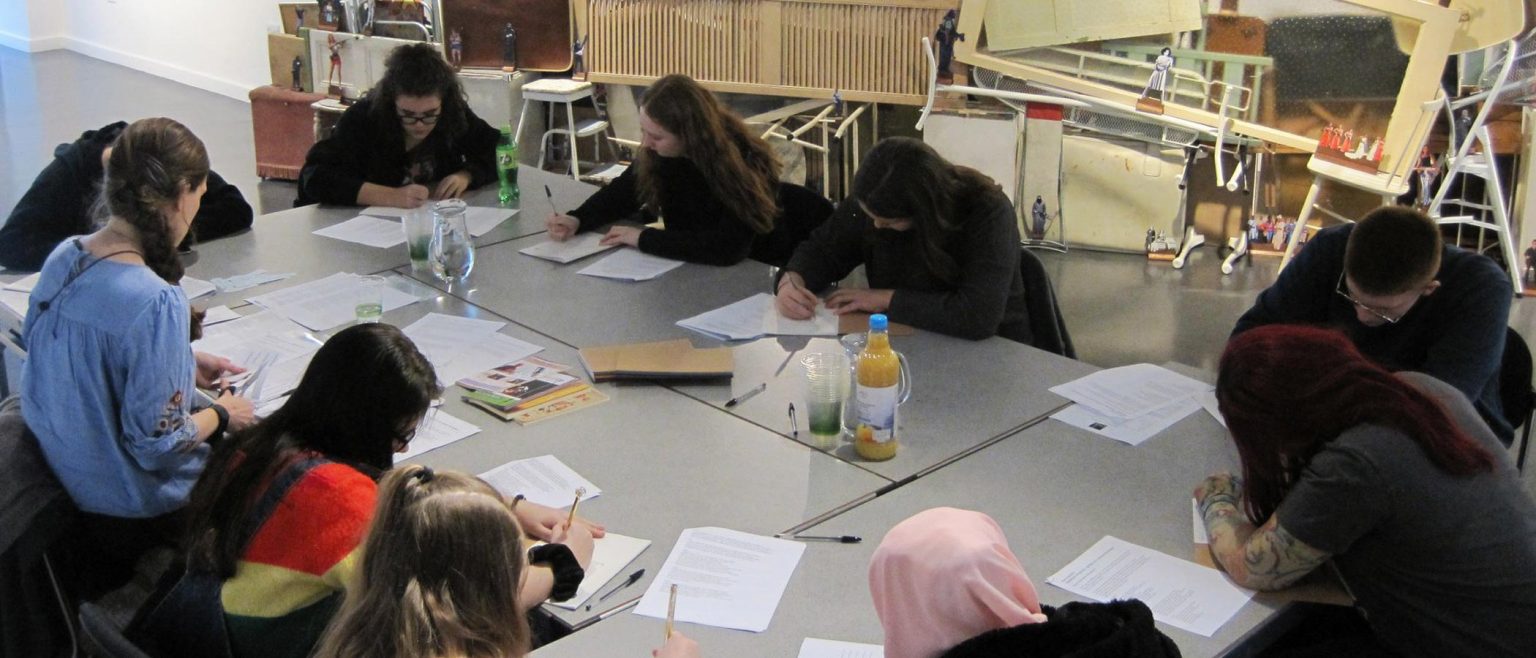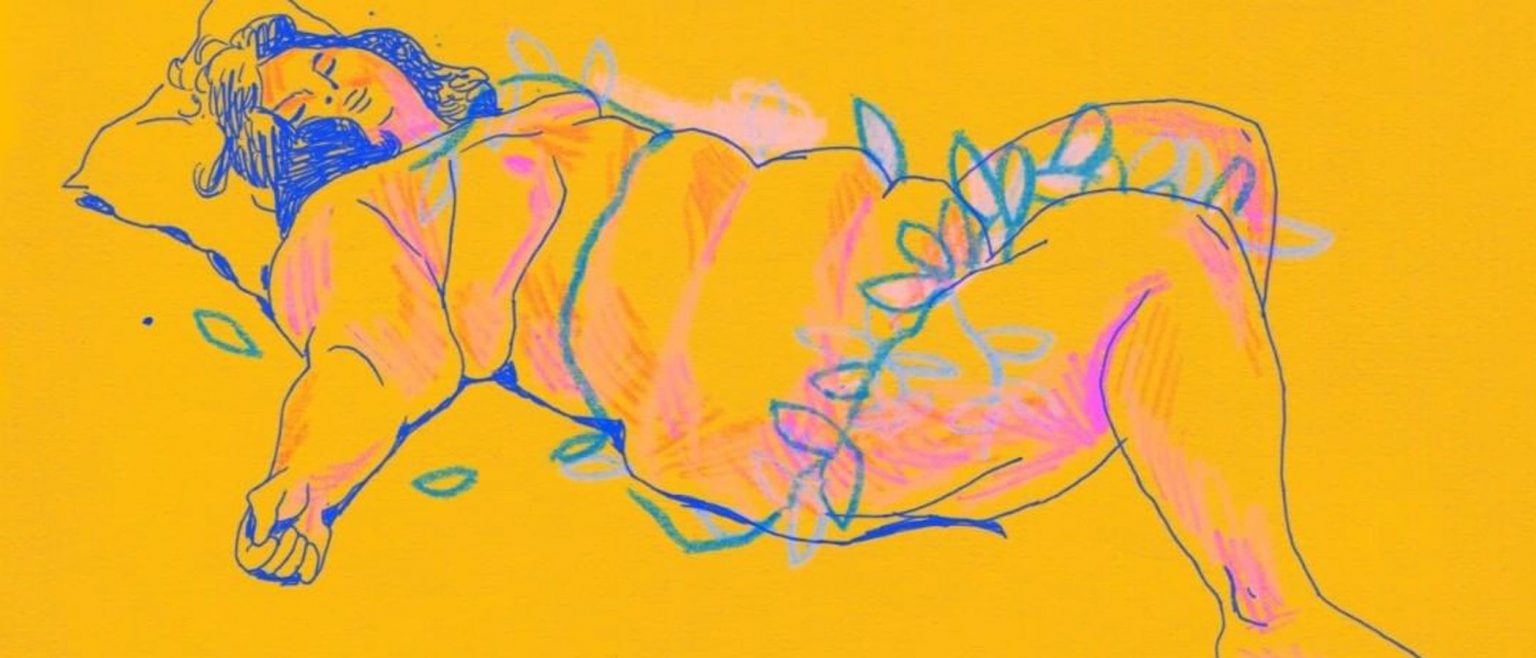The multiple lockdowns that have happened since the start of the Covid-19 pandemic in Spring 2020 have seen new artistic endeavours flower in virtual spaces around the world. Despite the often painful experiences that many have suffered since Covid hit, the use of online conferencing software and apps to create new safe spaces for people to share stories and skills, has undoubtedly been one of the few positive things that many will take away once some kind of normality resumes. And we talk about ‘normality’, we do so through the lens of majority cis male able-bodied, neuro-typical heterosexuals, because for those folk who live their lives at the intersection of disabled, queer, trans or non-binary, the lockdowns of 2020 and 2021, were definitely not a new experience.
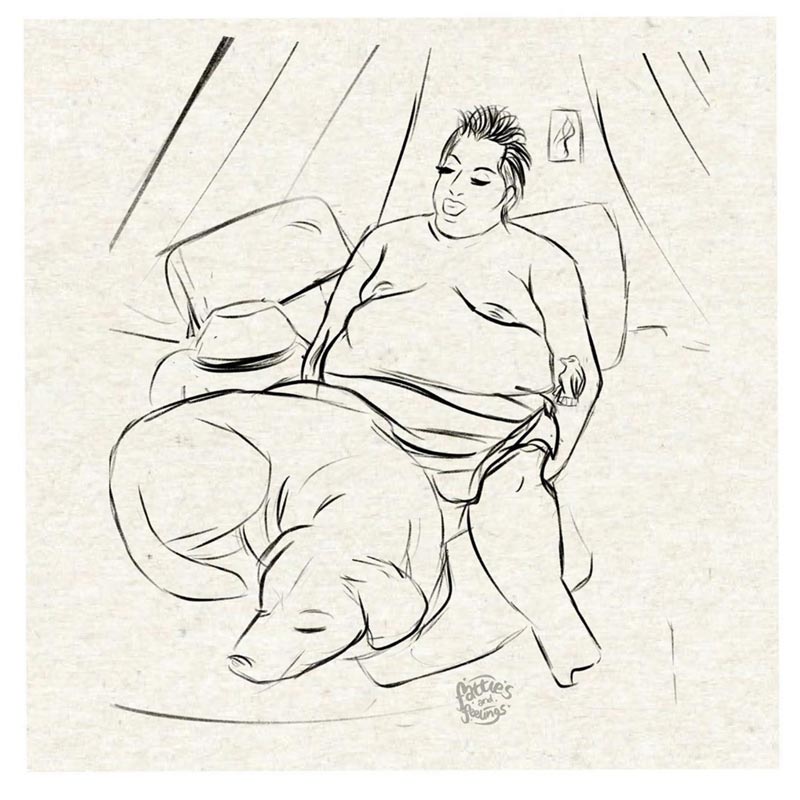
Sometimes, either through physical necessity or simply as a matter of safety, finding safe spaces online is a way of life. Fat Life Drawing (FLD), a growing international community with a love of art as a common thread, has become one of those online safe havens.
Established by sisters Emily and Isobel, FLD is a safe and judgement-free space for creatives of all abilities. The sisters created FLD after finding that most life drawing sessions lacked diversity and inclusivity. They centre non-traditional fat, queer, non-binary and disabled models and encourage participants to be mindful and to experience new perspectives.
Their models have body-types rarely seen in traditional/academic life drawing settings. By running classes remotely, they can feature models where they are often most comfortable – in their own homes.
This last year has seen their small community grow internationally, reaching as far as Australia.
We recently caught up with Fat Life Drawing’s founders Emily and Isobel to find out more.
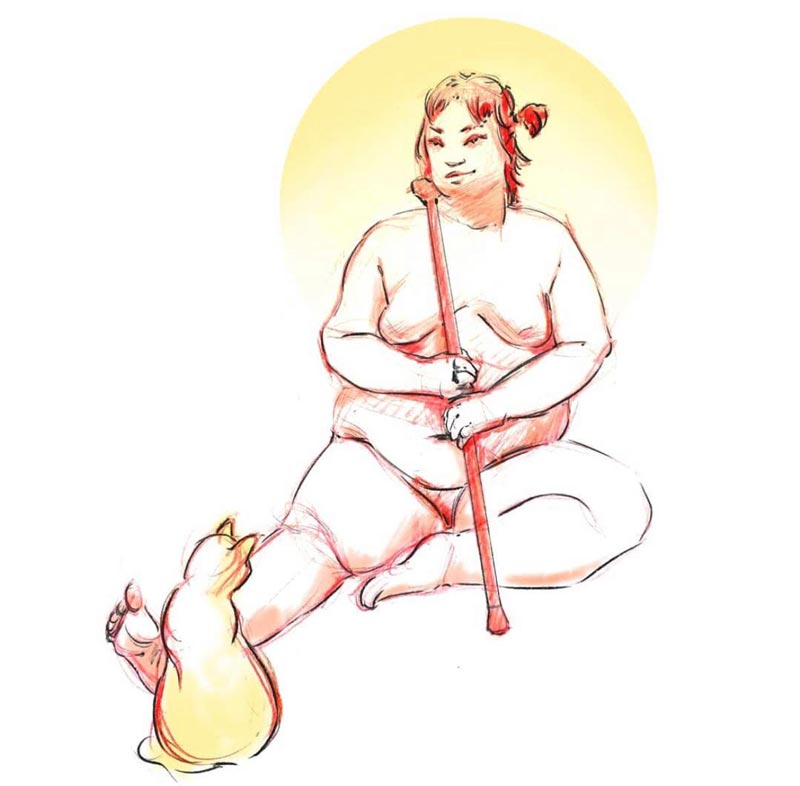
Who are you and what do you do?
EMILY – I’m Emily. I’m an English graduate and adopted Londoner working in content and copywriting for an online men’s health clinic. The day job is pretty different to Fat Life Drawing but I love the mix of both!
ISOBEL – I’m Isobel. I’m an Art Gallery & Museum Studies/History graduate living in North Yorkshire. Fat Life Drawing has been an entry point for me into a career in the arts. As difficult as it is to cultivate a career in the industry, I love getting involved in arts and culture wherever possible.
What was your first experience of community arts and life drawing and was it positive or negative?
EMILY – I’ve lived in London for nine years, and I’ve been to several life drawing sessions over the years. While most of them were fairly laid back “drink and draw” type sessions, I did find the models that we drew to be lacking in diversity, which slightly put me off.
ISOBEL – While doing my undergrad, I did one in-person life drawing session. It wasn’t particularly affordable, and I found that when I joined, I felt like I’d stepped into a space that wasn’t super welcoming to amateur artists.
Do you remember the first time you saw someone like yourself within the art world and what did that visibility do for you?
EMILY – Fat icons were pretty limited when I was growing up – Beth Ditto was the first fat and cool figure that I came across, and I sprawled posters of her all over my bedroom. In terms of artwork, I remember seeing Jenny Saville’s depictions of fat women, and I found it really empowering. I was honestly fascinated by them.
ISOBEL – If I’m being really honest – the singer in the Pussycat Dolls (Carmit Bachar) was the first ever public figure I was ever aware of who had a cleft lip and palate, like I do. It’s still very rare to see people with facial disabilities being depicted in art, especially in a positive or neutral light.
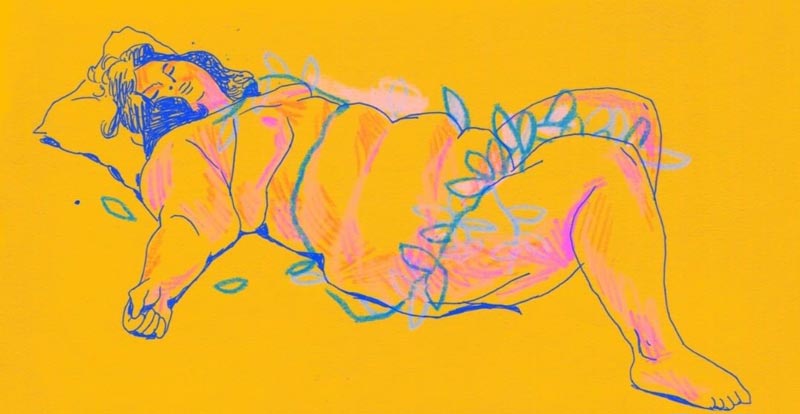
Tell me about the changes Fat Life Drawing has seen during the lockdown and the different audiences that have engaged.
EMILY & ISOBEL – We founded Fat Life Drawing during lockdown, so it’s all we’ve ever known! We have seen our audience grow really rapidly, particularly after the second lockdown was announced in January. We started the classes in June 2020, raising around £9,000 from June – December. It’s now early March 2021, and we’ve already topped what we raised for charity last year – putting us at a grand total of £19,000!
We have had artists from all over the world join us – the US, Australia, everywhere in Europe, India, Iceland and beyond! We receive a huge influx of messages from people everywhere on a weekly basis, telling us how much the classes mean to them and how we have helped transform their perception of body image. It’s a really humbling feeling.
It’s taken millions of able-bodied folk becoming housebound during this pandemic, to realise the importance of digital programming in the arts. Some worry that once ‘normality’ resumes, much of the digital offer will fade away, yet the people that were housebound prior to the pandemic, or already had barriers stopping them from engaging with arts venues, will still be there as an audience wanting. What are your thoughts on this?
EMILY & ISOBEL – For us, we will never neglect our online community, because of the accessibility that doing it all online provides. We are sisters and we haven’t seen each other in person since March 2020, so it has kept us together and we have seen plenty of our attendees coming on dates, with family members, and connecting with new friends through the community. We have had many disabled attendees telling us how grateful they are to be able to attend – and we wouldn’t ever think of doing it any other way. Because we work with models who occupy marginalised bodies, including disabled models, it allows them to be featured in life drawing classes from the comfort of their own home – and there’s something really powerful about that.
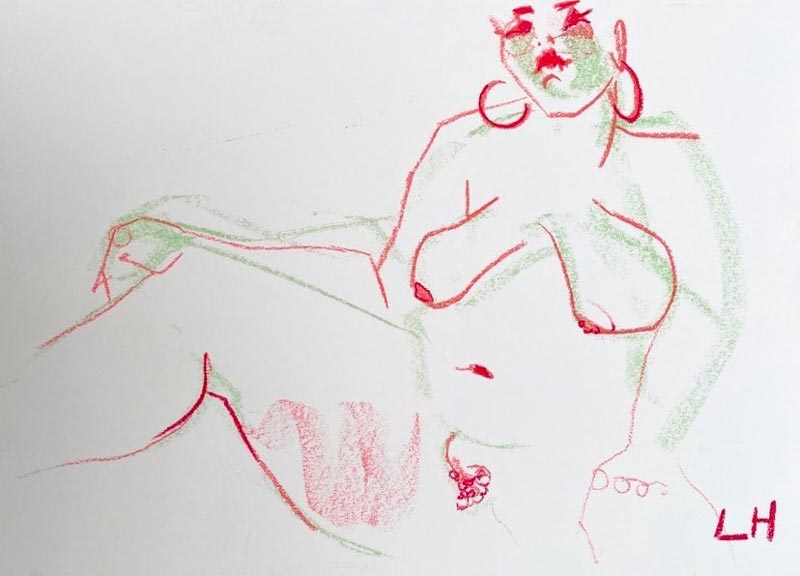
How can people find out about your forthcoming life drawing sessions?
We have a website: www.fatlifedrawing.co.uk and we’re really active over on our Instagram: @fatlifedrawing.
A second interview, with one of Fat Life Drawing’s model, appeares in No Boundaries, a zine published by The Civic.
